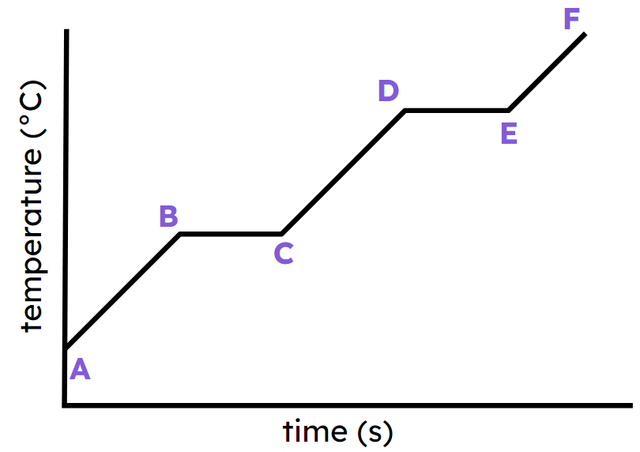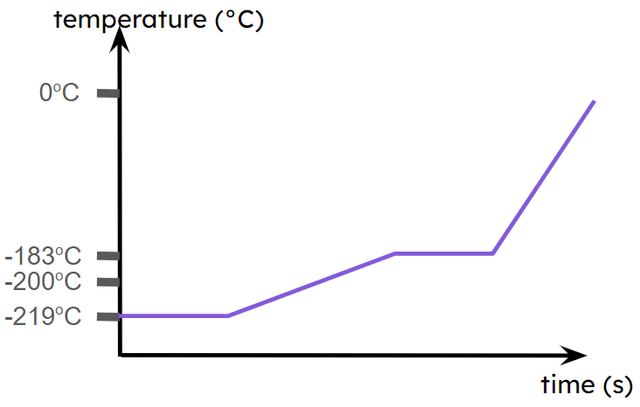Heating and cooling curves
I can explain the shape of a heating/cooling curve by describing the energy changes through the heating/cooling of a substance.
Heating and cooling curves
I can explain the shape of a heating/cooling curve by describing the energy changes through the heating/cooling of a substance.
These resources will be removed by end of Summer Term 2025.
Lesson details
Key learning points
- An experiment can be planned to measure the temperature change through continuous heating of a substance
- Energy is needed to overcome forces of attraction between particles so temperature does not change when changing state
- The change in state of pure substances can be seen on a heating/cooling curve as a horizontal line
- There is a change of energy, arrangement, and organisation of particles of a pure substance at each stage
Keywords
Heating curve - shows temperature changes of a substance over time as it is heated.
Cooling curve - shows temperature changes of a substance over time as it is cooled.
Intermolecular forces - are forces between particles.
Common misconception
Pupils struggle to understand what is taking place at the horizontal parts of the graph.
Be concise with your language and ask pupils to use the same language. 'have enough energy to overcome the forces of attraction between particles', 'to slide past each other', 'to move past each other'.
To help you plan your year 10 combined science lesson on: Heating and cooling curves, download all teaching resources for free and adapt to suit your pupils' needs...
To help you plan your year 10 combined science lesson on: Heating and cooling curves, download all teaching resources for free and adapt to suit your pupils' needs.
The starter quiz will activate and check your pupils' prior knowledge, with versions available both with and without answers in PDF format.
We use learning cycles to break down learning into key concepts or ideas linked to the learning outcome. Each learning cycle features explanations with checks for understanding and practice tasks with feedback. All of this is found in our slide decks, ready for you to download and edit. The practice tasks are also available as printable worksheets and some lessons have additional materials with extra material you might need for teaching the lesson.
The assessment exit quiz will test your pupils' understanding of the key learning points.
Our video is a tool for planning, showing how other teachers might teach the lesson, offering helpful tips, modelled explanations and inspiration for your own delivery in the classroom. Plus, you can set it as homework or revision for pupils and keep their learning on track by sharing an online pupil version of this lesson.
Explore more key stage 4 combined science lessons from the States of matter unit, dive into the full secondary combined science curriculum, or learn more about lesson planning.

Licence
Starter quiz
6 Questions
change from a solid state to a liquid state
change from a liquid state to a gas state
change from a liquid state to a solid state
change from a gas state to a liquid state
Exit quiz
6 Questions





